Juicing for Diabetics — Is This a Good Strategy?
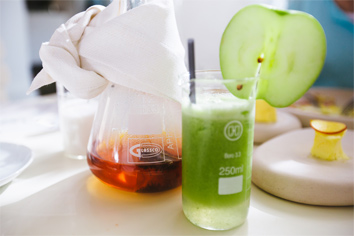
If you are considering juicing as a way to prevent or treat diabetes, this might not be a good strategy. Every person is different, and you should definitely consult your doctor before deciding on the right course of action. But I believe juicing is not the way to go, even if we are talking about green juices.
This post is written with diabetes type II in mind, as I have some experience with this condition. But both people with diabetes type 1 and type 2 should talk with a medical professional when planning any significant changes in their diet.
In the following I will talk about how I personally look at this health condition and exactly what kind of change in you eating habit could be beneficial. However, it doesn’t necessarily mean the tips I am about to give you can be applied by everyone. Nevertheless, I hope that my experiences can be useful at least in a general sense.
How did I get involved?
A close friend of mine was diagnosed with type II diabetes a couple of years ago. It was a dreadful experience for her. The guy who was performing her blood test called her up on the phone even before all the results were ready. He was obliged to let her know as soon as possible that her fasting blood sugar was way too high and that she probably has to be hospitalized. And indeed it was blown out of proportion, close to 400 mg/dL. It turned out that she had insulin resistance and diabetes type 2.
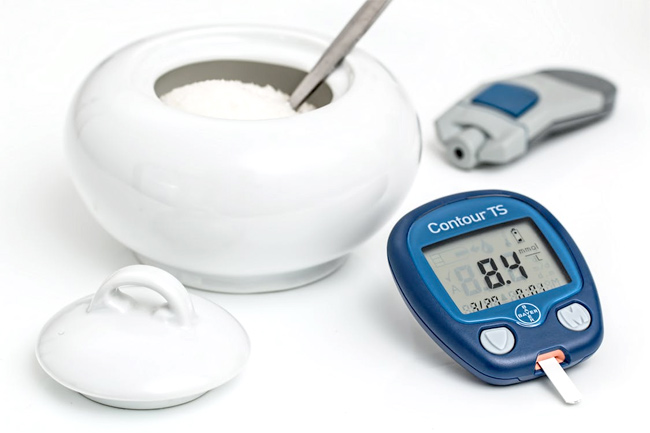
Needless to say, my friend was overweight, and her usual diet consisted of pizzas, colas, breath, cookies, pastas, and a lot of processed food. These disastrous eating habits were going on for quite some time, and it seemed she was captured in a vicious circle from which there was no escape.
And these poor eating habits certainly were the major contributing factor that brought in the diabetes.
After getting diagnosed, she immediately stopped consuming sugar, soft drinks, other sweet products, and foods with high glycemic index. This is the usual wisdom and is certainly a necessary thing to do. But as it turned out it was not sufficient.
Although using foods with low glycemic index reduced her fasting blood sugar significantly, it was still very high, much higher that the allowed upper limit.
So my friend started seeking additional advice as to how to make further modification of her diet to try to reverse her medical condition. She didn’t really know anything about diabetes, and neither did I. I also decided to try to help and we started investigating together…
I remember vividly, the first thing we looked was a medical encyclopedia. And the main suggestion from this encyclopedia was that her diet should consist of 60 percent carbs, 10 percent fats, and 30 percent protein.
From this perspective, I think that this is a wrong advice.
To make the long story short, after trying a number of things, she opted in for an adapted type of Ketogenic diet. A great resource was the Dr. Jack Kruse’s blog. A very insightful thought was his assertion that insulin resistance comes after leptin resistance. So if a person manages to reset his or her leptin resistance, they will reset their insulin resistance as well, which is one of the main causes of diabetes type 2. If you are interested, check and his Leptin Reset procedure.
And this really made a difference. Not immediately, it took almost one year for her blood sugar to go below the acceptable 125 mg/dL, and yet another year to get to 105 mg/dL.
But how juicing fits in this change of diet? Let’s see if and what juices are acceptable.
Table of Contents
What Juices are Acceptable?
 Pretty much none, I would say. Although some sites recommend using the 80/20 rule when juicing (80 percent of juice from veggies and 20 percent from fruits), I don’t think that is safe.
Pretty much none, I would say. Although some sites recommend using the 80/20 rule when juicing (80 percent of juice from veggies and 20 percent from fruits), I don’t think that is safe.
The problem with juicing and diabetes is that juicing removes almost all the pulp from the fruits and vegetables. If you are juicing fruits, what you are left with is sugary water. It means, the juice will be absorbed into the bloodstream quickly and there will be no fiber to buffer this steep rise of the glucose levels.
This became clear to my friend from the get go. As she tried to change her diet from highly processed food to natural whole foods, she also tried juicing and making smoothies.
Almost immediately after drinking the juice she felt sick. Whatever sugar was there, even if the fruits were with low glycemic index like cherries, strawberries, grapefruits, or pears, it was quickly absorbed in her blood stream causing sharp rise in glucose.
Besides glucose, the other type of sugar present in fruits is fructose. Fructose won’t cause blood sugar spikes, nor will it promote insulin secretion. That’s the reason why so many commercial products for diabetics contain fructose rather than glucose. But fructose has its own spectrum of adverse health effects. So you would be wise to avoid fructose as well.
If you juice just vegetables, you should be in a better position. But beware, some starchy veggies (like carrots, squash, sweet potatoes, beet, etc.) contain a lot of sugar. They are hardly acceptable. Juicing green leafy vegetables should be your best option, but then again, removing the fiber might not be so beneficial for people with diabetes. Another great option for diabetics is bitter melon.
Rather than juicing, prepare smoothies (green smoothies) to get the beneficial fiber as well. Again, avoid fruits (almost all fruits), and the starchy vegetables mentioned earlier.
Don’t add anything to sweeten your smoothie. Drink it as is. Some people recommend adding natural honey, but please note that honey is about 60 percent fructose. Again, you would be much safer to avoid fructose.
Best Drinks for Diabetes
-
Raw Unsweetened Cacao
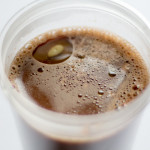 Use raw organic cacao powder and hot water to prepare your cacao drink. Add some cinnamon powder, or vanilla powder if you wish. No sugar, no artificial sweeteners, no honey. Not even stevia. If you want to improve the taste, add some cacao butter into the warm drink.
Use raw organic cacao powder and hot water to prepare your cacao drink. Add some cinnamon powder, or vanilla powder if you wish. No sugar, no artificial sweeteners, no honey. Not even stevia. If you want to improve the taste, add some cacao butter into the warm drink. -
Turmeric ginger tea
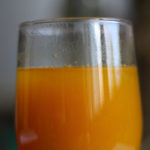 This is a great drink that will help you fight insulin resistance. Check this post for more information how to prepare.
This is a great drink that will help you fight insulin resistance. Check this post for more information how to prepare. -
Green Tea (Organic)
Organic Green Tea is great for diabetics. It can help prevent and manage diabetes type II. It can help push the cells of the body to better metabolize sugar. In addition, green tea is packed with tons of fantastic health benefits. Why organic? Green tea is heavily sprayed and can also contain high concentrations of aluminum (not a bio-friendly element). To avoid these problems make sure you buy it organic.
-
Green Smoothies
Make sure no sugar or sweeteners are added. Check this post for tips on preparing green smoothies.
-
Chlorella Juice
Chlorophyll-rich foods like spirulina, wheatgrass, or chlorella are great for improving the insulin sensitivity. My favorite juice is the following powerful combination: one teaspoon of organic chlorela powder, one teaspoon of ashwagandha, juice from half a lemon, and pure clean water. Great for dealing with insulin resistance.
Drinks to Avoid
-
Soft Drinks
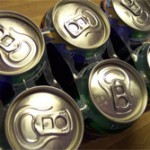 This is no brainer. Soft drinks are filled with three disastrous foods: sugar, fructose, and caffeine. If you are wise, there should be no safe quantity of soft drink that you can drink if you have diabetes.
This is no brainer. Soft drinks are filled with three disastrous foods: sugar, fructose, and caffeine. If you are wise, there should be no safe quantity of soft drink that you can drink if you have diabetes. -
Fruit Juices
As discussed earlier, avoid at all cost. Even if they contain only fructose. Fructose will indirectly cause a lot of harm in your body, especially if you are dealing with diabetes.
-
Coffee
I believe coffee has a number of health benefits but also brings a number of health problems. Probably the worst thing about coffee and diabetes is the fact that cofee stimulates the secretion of cortisol. Cortisol is the master stress hormone, responsible for the fight or flight response of the human body. One of the consequence of higher cortisol levels in the blood is the release of sugar from the liver to the bloodstream. On top of the insulin resistance, you don’t want extra glucose in your blood stream.
-
Alcohol
This one should be self-explanatory. Alcohol is bad for everyone, diabetics included. Most alcoholic drinks contain carbohydrates that raise blood glucose. In addition, they raise blood triglycerides, and can increase blood pressure. Apart from that, you diminish your will power and take additional calories, as alcohol often makes people overeat and contains calories itself.
Take-Away Points
The right juicing practice alone won’t be enough. You would have to change your entire lifestyle if you want to deal with or even reverse your diabetes type 2.
Yes, it is possible to reverse diabetes type 2 naturally, with the right diet and the right lifestyle. It won’t happen overnight, but if you are serious about it, you can to it.
One of the most important thing is drastically reducing the carbohydrate intake, which effectively brings your body into a state of ketosis. In an interview by Dr. Mercola, Dr. Tim Noakes, recommends no more than 15 grams of net carbs per day for diabetics, until their insulin sensitivity is regained.
From my friend’s experience, I can tell you that you really have to be religious about minimizing the net carbs in your diet.
Don’t forget physical activity, like for example walking for 10 minutes after each meal. My friend even got a dog to make herself go out every day.
Hopefully this post has helped you to understand the basic principles of juicing and diabetes, what drinks to prepare and what drinks to avoid at all cost.
Cheers!

Leave a comment